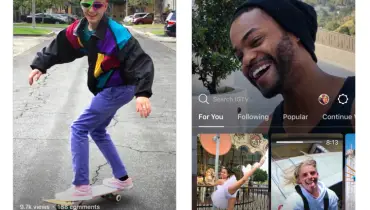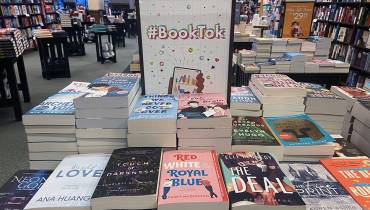7 Golden Formats for Writing Web Content that People Crave

Writing web articles that people want to read doesn’t just involve coming up with ideas, thoughts and suggestions, pulling a chair behind your desk and sitting down to write. It entails much more than that. You need to conduct thorough research, carefully organize your thoughts and lay out your ideas in the most coherent and effective way possible.
Your work needs to pique readers' interest, capture their imagination and convince them it is in their best interest to keep reading your text. In this sense, writing articles that people crave requires a lot of creativity, proper planning and effective presentation. Unfortunately, creativity doesn’t always come naturally to many writers.
For many of us, creativity won't bubble within trying to break free every time we sit down to write. Nevertheless, it is our responsibility as writers to produce work that is interesting, informative and engaging to our readers despite any creative blocks we may experience. Failure to do so and no one will read your work — except you, of course.
So, how do you make sure your article is engaging to readers even when you are at your lowest level of creativity? Here are some suggestions:
How to Write Engaging Web Articles
Start off by picking a topic of your choice. Let’s say you choose a topic like car insurance. Some writers jump straight into it and start writing at this point. Refrain from doing that. It’s often the wrong approach. Instead, pick an angle first for that particular topic. Think about what aspect of car insurance you want to write about. Unearth something new or exciting in the world of car insurance that people would be interested in or like reading about.
For example, in our case we could write about “5 All-time Best Car Insurance Companies in UK” or may be something like “The Most Ridiculous Car Insurance Claims Ever.” Just find an interesting angle for your article that you suspect your target audience will love and work with it.
Next choose the “format” for which you will structure or organize your article around to present your thoughts in the most effective manner possible, depending on your goals for writing the piece and your target audience. This is an important step in crafting engaging articles that people crave.
Top Article Formats for Structuring Web Content
There are many different article formats you can employ here. I have found seven golden formats that are the most successful on the web. Try these formats to write engaging web content that people will enjoy reading:
1. The Numbered List
The numbered list is a favorite of many writers. It represents one of the easiest formats for writing articles at lightning speed and people just love numbers. Make a list of the top 3, 10, 21, 50 or whatever other number you want of something that people should know about in your chosen topic.
Write a brief, one or two paragraph introduction of the topic and then jump straight into your list of secrets, reasons, ways or types of something. Keep the exposition of each item down to only a few sentences long for maximum effect. Make sure you number your list correctly and give the total number of items in the article title.
Some of my favorite numbered list articles include 7 Reasons Why List Posts Will Always Work, 101 Motivational Business Quotes and 40 Things To Say Before You Die.
2. The How-To
People have a strong urge to understand what they don’t know and want to do things for themselves. Whether it is fixing a broken appliance or fixing a broken relationship, people want to know the intricacies of doing things for themselves. The How-to article leads the reader through how to do a specific task often with brief, action steps toward a given objective.
To write a high value How-to article, you need to know exactly what you are talking about. Consider your expertise. Are you a social media marketer, for example? Maybe you could write an interesting How-to article on how to market a new business online. What if you are a plumber by profession? You could write a How-to article on how to fix a broken kitchen pipe or something similar.
Just be thorough, use simple language that an 8th grader would easily understand and someone who did not know how to accomplish the task in your article will appreciate your excellent tutorial. Some of my favorite How-to articles include How to Manipulate People For Fun (and Profit) and How to Create a Minimum Viable Online Business.
3. The Ultimate Guide
Different types of content produce better results than others. Detailed posts, for example, generally tend to offer more value to readers and get more social shares and links than short web posts. Detailed posts, however, are more taxing to write. The Ultimate Guide is a detailed post that provides a thorough examination of the fundamentals of a given topic or subject.
It instructs readers on how to accomplish a task, points the way to achieve a desired objective and also helps readers make sound judgments and decision about a given topic. Focus more on delivering high quality, high value information with your ultimate guide than the actual length of the guide.
Some of my favorite ultimate guide posts include, The Ultimate Guide to Writing Incredible Headlines and How to Get Paid to Write for Magazines – The Ultimate Guide (I love this clever mix of both the How To format and The Ultimate Guide format).
4. The Case Study
A case study is a comprehensive report about a specific topic that can ran into many pages. It analyzes the topic with the view to make generalizations that help address issues and or solve problems relating to the topic. For purposes of the web, a mini case study is growing in popularity by the day as a teaching aid and marketing ploy online. A mini case study is a shorter version of a case study usually no more than two or three pages long.
To write a mini case study, raise a provocative question or highlight a specific problem and then address the question or problem using three or four real life cases that show how the question or problem was successfully resolved. For example, let’s say you raise a provocative question in the title like “Is it Worth it to Quit Your Day Job and Go Full-Time Freelance?”
Give the reader a real picture of how many people are actually leaving the corporate world and going solo by providing a few statistics to that effect. Then feature a few more real life cases with different outcomes to show the reader the different possible outcomes of quitting your day job for a freelance career under different circumstances.
Finally, come up with logical, carefully analyzed generalizations on the best course of action a person thinking of quitting her day job for a freelance career should take based on the results of your case studies. This way you produce an article that is rich in information and provides real, practical guidance on the best way forward.
People generally love and trust case studies. One of my favorite collection of mini studies are these 7 Creative Social Media Marketing Mini Case Studies. Another social media case study you can look at for inspiration is this case study on TechCrunch by Neil Patel.
5. The Latest Trend
The latest trend article exists under the category of web copy that have an inherent sense of urgency. Time is of the essence when it comes to writing trending posts. When trends like the latest tax shelters, branded gadgets or hairstyles arrive, people want to know all about them as quickly as possible. You will suddenly see dozens of articles covering the topic from its origins, benefits and drawbacks within a short time of the trend emerging.
To write trending articles that people want to read, keep tabs on new trends. Look out for trends set by celebrity endorsements, sudden events or a resurgence of past norms. While trends come and go within a short time frame, the latest trend format can be considered “evergreen.” Think about it: Do you think trending subjects like latest fashion, home décor, delicacies (food) and parenting methods are going away any time soon?
The elements within a trend might change frequently, but the overall subject remains the same. You will always find something trendy to write about. Use words like "new," “latest,” and phrases like "new studies “and " the latest secret," in your article to make it interesting and show the reader it is current and well researched.
Always try to get the first scoop on new trends ahead of the competition. This will place you well in landing choice spots in lucrative trending publications like fashion magazines. A good example of a trending post is The Latest Weapons Against High Blood Pressure.
6. The “Premise Knock Down”
The “premise knock down” article presents an alternative view or approach to current, conventional methods or ideas. Here you raise a controversy or present an alternative angle to a popular topic by discussing the drawbacks of widespread, current norms in an industry. Magazines and newspapers use this method many times to get people talking or thinking.
For example, you will often find medical articles with titles like “How Effective Are Fish Oil Supplements?” Reading the article, you’d expect to find many new and exciting revelations of the benefits of fish oil. Instead, you find the article reveals point-by-point findings of a scientific study that narrows the beneficial effects of fish oil on your overall wellbeing.
Your initial thoughts about a topic are knocked down and you get another (often more accurate) view of how things really are. Two of my favorite premise knock down articles in web writing is The “Content is King” Myth Debunked by Derek Halpern and Why Finding Your Blogging and Online Voice is a Total Myth by Marcus Sheridan.
7. The Q&A Interview
Lately, more and more companies and blogs are using interviews to satisfy their audiences’s thirst for information. You can decide to present your interview in the traditional standard article format or present the interview in a Question and answer (Q&A) format. The Q&A format is more prevalent and well adapted for web usage due to its scanability.
Find a credible expert in your industry and request an interview from them. If they agree to take the interview, shoot them predetermined questions. Be polite and ask relevant questions that your readers will enjoy and learn from. For example, if your article topic is on the latest trends in the banking sector, interview a top professional in the banking industry.
These tips on how to find influential people with social media come in handy when looking for people to interview. One of my favorite Q&A interview is the Darren Rowse, Interview With A Pro Blogger on Retireat21.com.
Image credit: Flickr user Notfrancois.




















